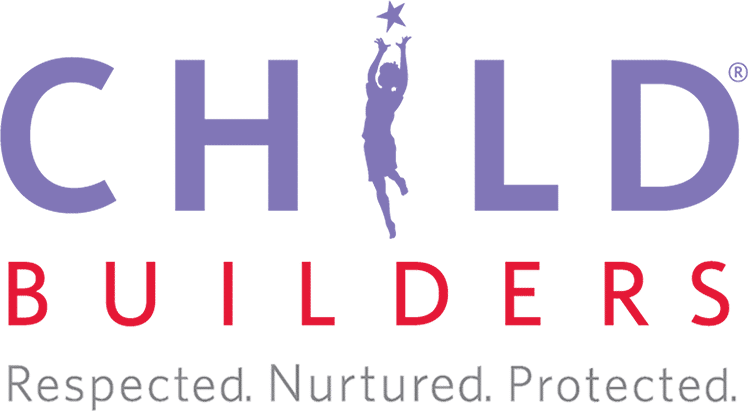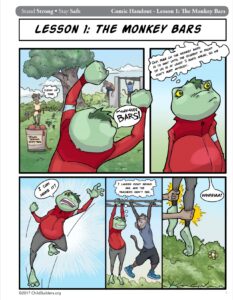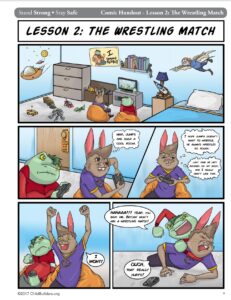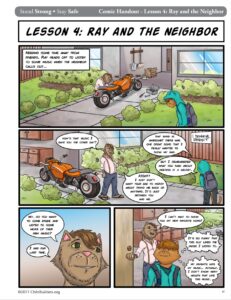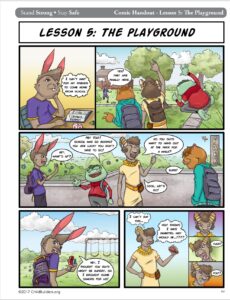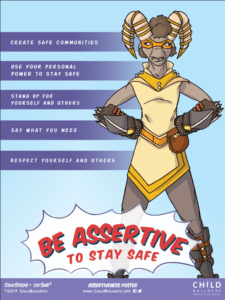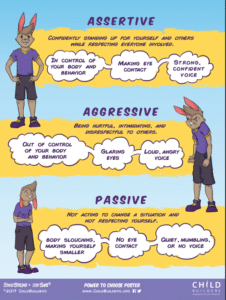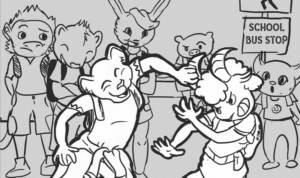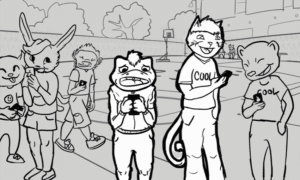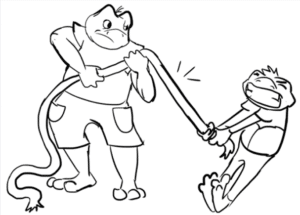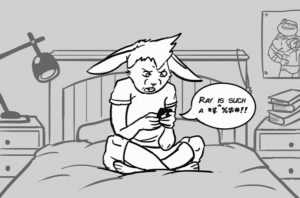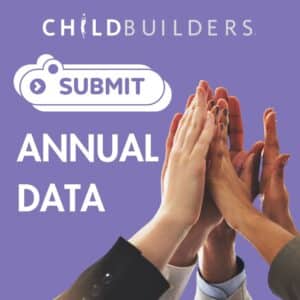Lower Elementary
Upper Elementary
About the Program
The message of Stand Strong • Stay Safe is simple:
- I deserve respect (and so do my classmates/teachers).
- I have the right to be safe (and I know what is safe).
- I have the power to choose (and I can choose an assertive response).
- I will get help (and I will keep telling until I get the help I need).
It is up to adults to keep children safe from. Sadly, children must often handle unsafe situations on their own. Like a vaccine against disease, Stand Strong • Stay Safe prepares children to act as their own first line of defense against unsafe situations.
Stand Strong • Stay Safe – Elementary is a safety education curriculum that teaches 2nd-5th Grade children the assertiveness and emotional literacy skills they need to build positive communities, stand up for themselves, and get help when faced with unsafe situations. Through age-appropriate lessons, students are prepared to stay safe and get help when faced with bullying, emotional abuse, physical abuse, sexual abuse, neglect, and other challenges.
Stand Strong • Stay Safe - Lower Elementary
- Lesson 1: Be Assertive
- Lesson 2: Boundaries and Consent
- Lesson 3: Physical Abuse
- Lesson 4: Sexual Abuse
- Lesson 5: Emotional Safety
This series must be taught prior to the Upper Elementary series, even if students are older.
Stand Strong • Stay Safe - Upper Elementary
- Lesson 1: Safe Relationships
- Lesson 2: Emotional Control
- Lesson 3: Handling Conflict
- Lesson 4: Stopping Abuse
- Lesson 5: Stay Safe Online
The lessons in this series build on the learning that occurs in the Lower Elementary series and should be viewed as an extension. Learning progressions must cover the Lower Elementary series prior to teaching the Upper Elementary series.
About the Characters
The characters featured in the Stand Strong • Stay Safe Comics have been carefully created to appeal to today’s elementary-age students. Each character has a unique challenge as well as a special set of character strengths they use to solve problems. Presenters are encouraged to highlight the characters’ challenges if they help address a current issue, concern, or topic for students in a particular class. The comics and lesson scripts do not, however, place these challenges at the center of the discussion. The specific characteristics portrayed by each character are designed to reflect common risk factors for bullying and abuse. Behavior challenges, physical differences, learning disabilities, and identifying as LGBTQ increase the risk of bullying and abuse (Davis & Nixon, 2010; Hibbard & Desch, 2007; Kosciw, et al., 2015; Rose, Monda-Amaya, & Espelage, 2011). Prejudice and discrimination are often contributing factors in bullying and abuse.
Researchers have found that when victimization is based on discrimination, youth experience more intense bullying, increased truancy, more substance abuse, and worse mental health outcomes than other students (Russell, Sinclair, Poteat, & Koenig, 2012). It is important for school personnel to acknowledge the role of bias in bullying and abuse, and to recognize that there are students on every school campus experiencing one or more of these challenges.
The characters are tools to facilitate difficult conversations. In the upper elementary curriculum, the characters feature in brief stories used to launch discussion. Presenters should be familiar with their back-story, but avoid dwelling on the details during class.
Curriculum Includes
- 2 vertically aligned curriculum levels (Foundation or Lower Elementary and and Extension for 4th-5th Graders who have already received Foundation), each consisting of 5 30-minute lessons
- Presentations with video or stories featuring superhero characters, role-play, and discussion
- Home Connections and access to Parent Guide
Curriculum Training
Curriculum training prepares educators and volunteers to teach this program in 2nd through 5th Grade classrooms. Support, coaching, and materials needed for implementation are included in the training.
Training Goals
Participants of curriculum training will:
- Understand how adverse childhood experiences and trauma affect children
- Be able to recognize signs of physical, sexual, and emotional abuse andrespond appropriately to disclosures
- Learn effective implementation techniques for each lesson throughdemonstration and practice
- Connect with ChildBuilders’ staff for ongoing support and coaching
- Gain access to all curricula and materials needed to implement the program.
Training Details
Time: 8 Hours, including CE Credits for Texas teachers, social workers, and LPC’s.
Cost: $325 per participant, minimum of 8 participants
Includes digital curriculum and materials via ChildBuilders Online.
